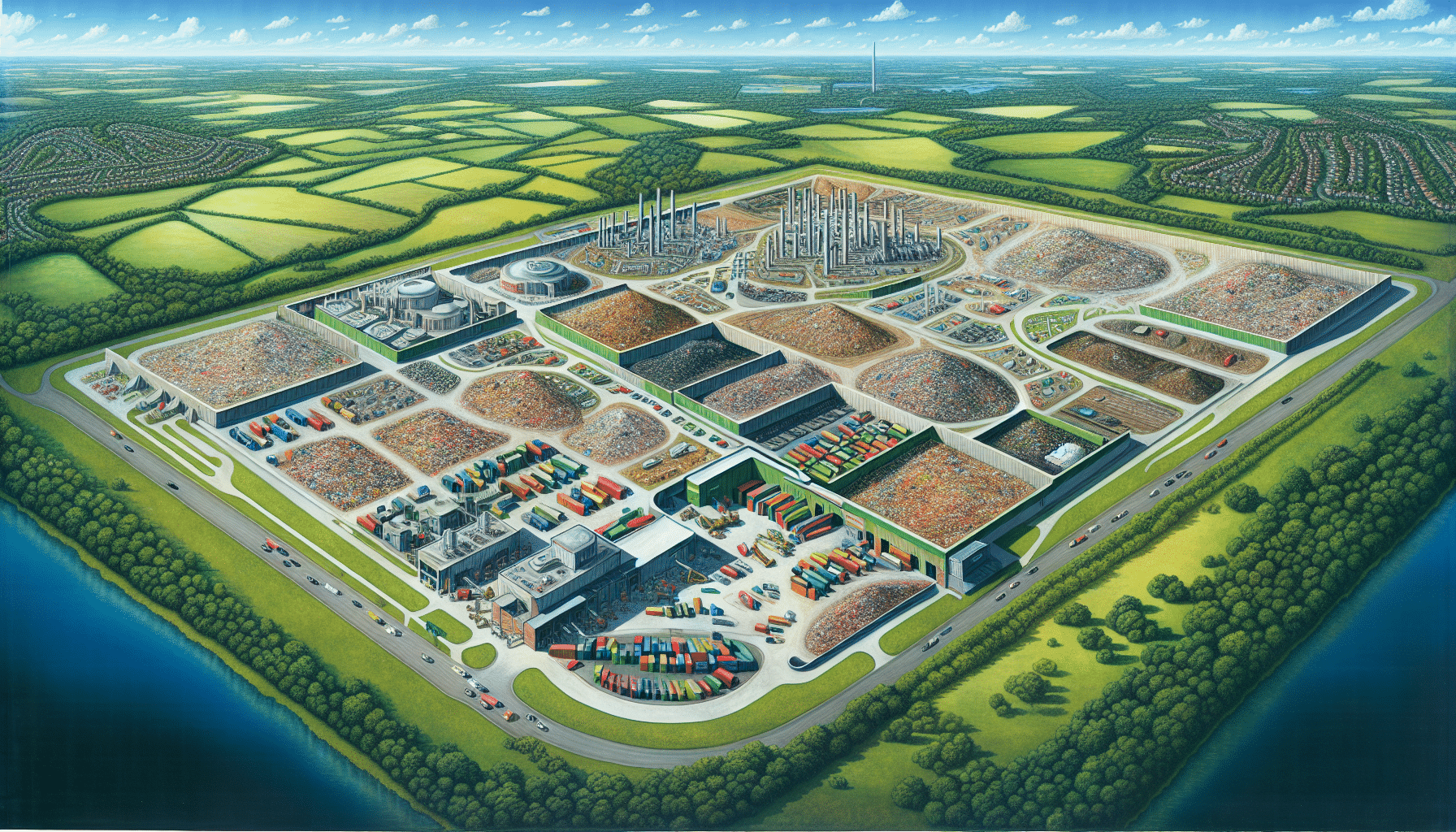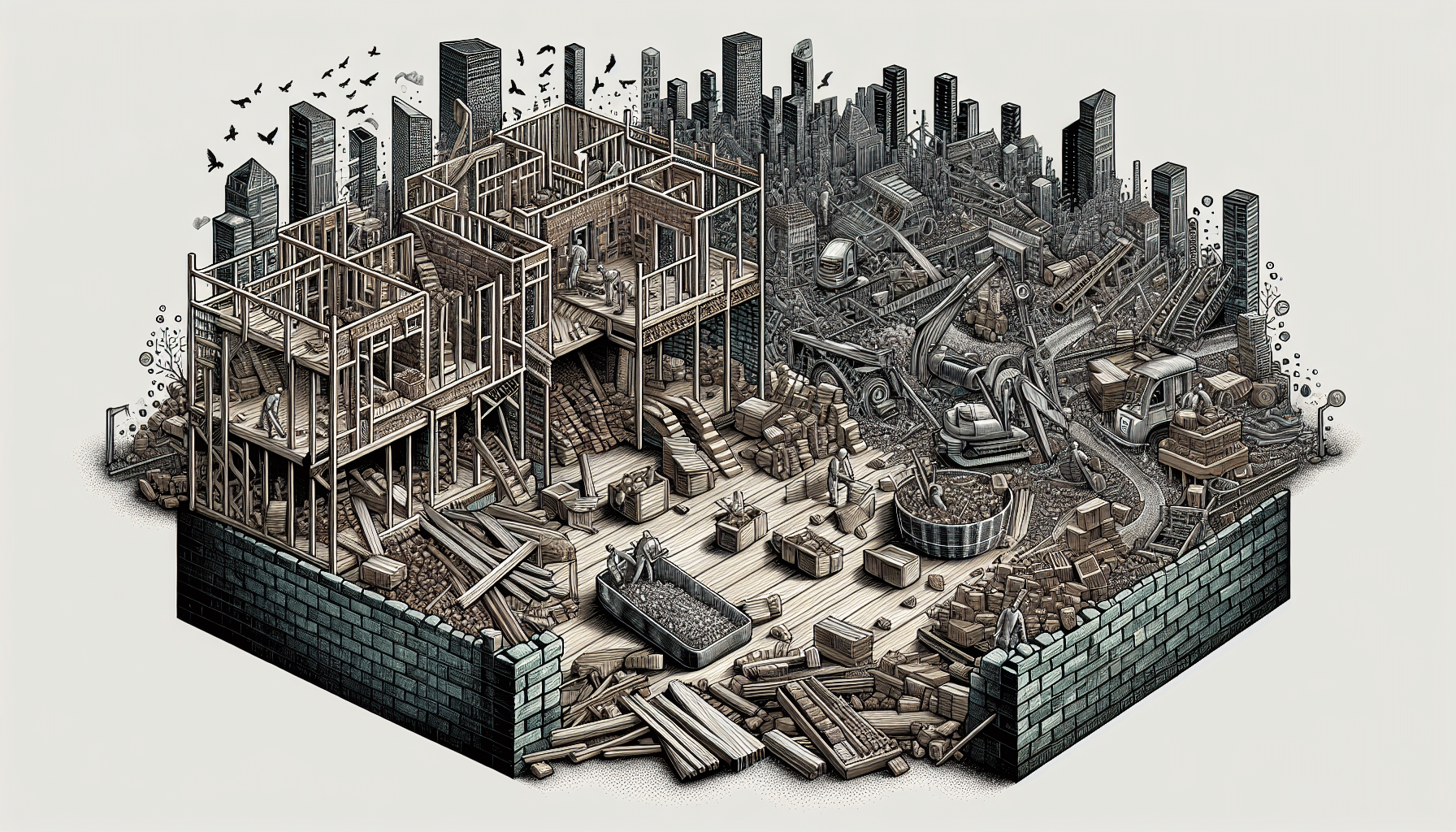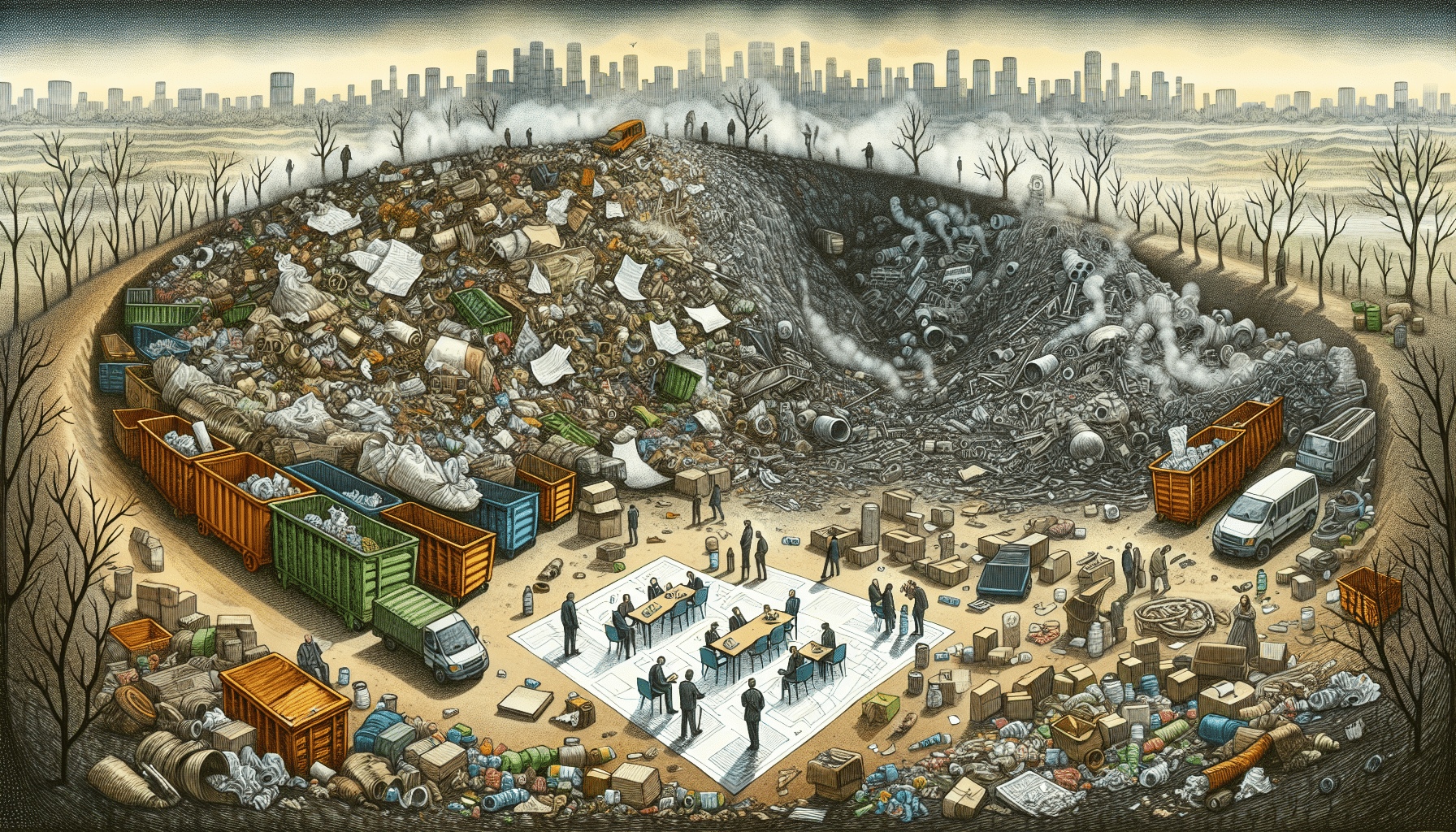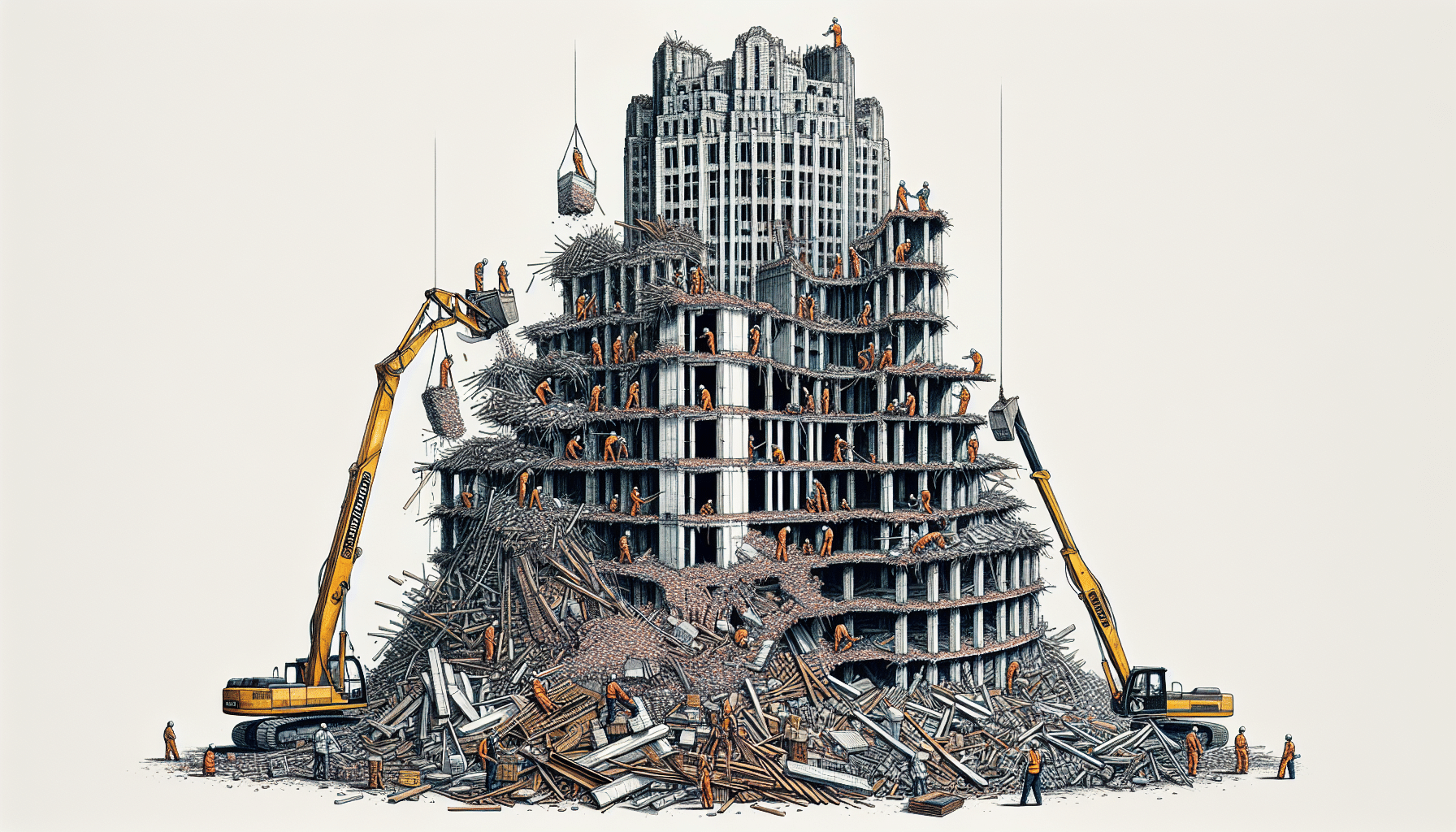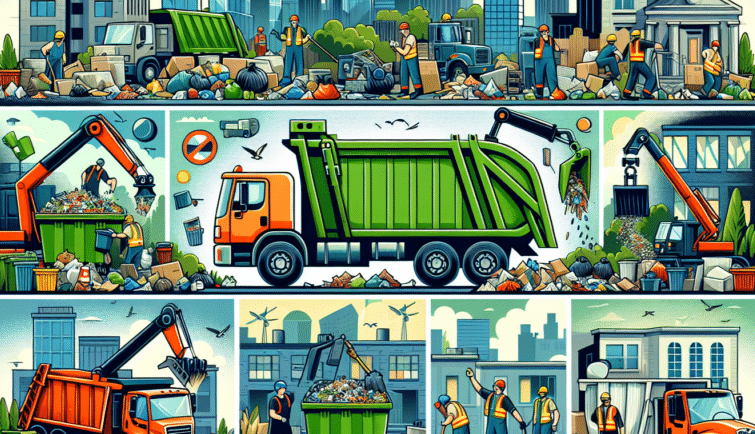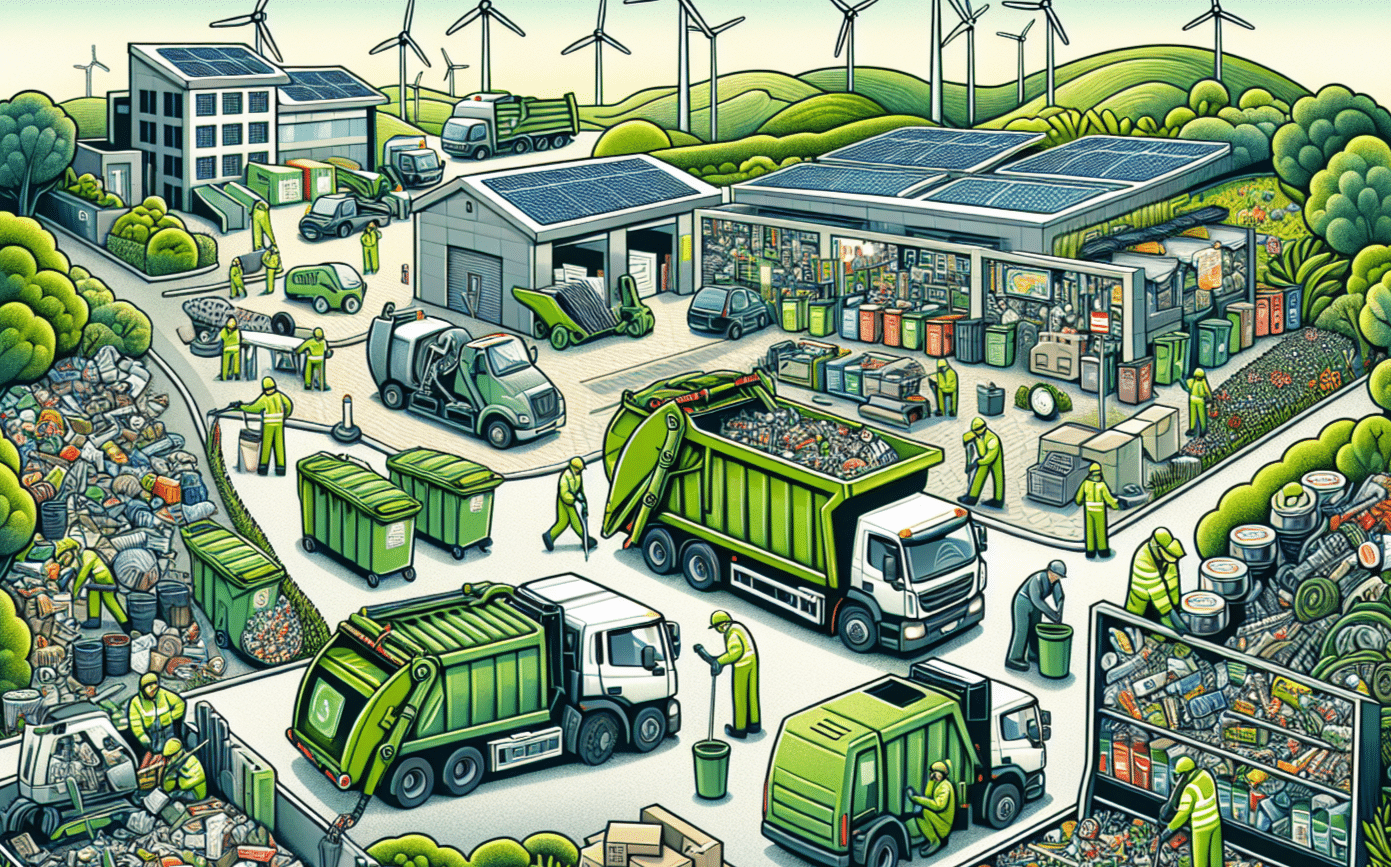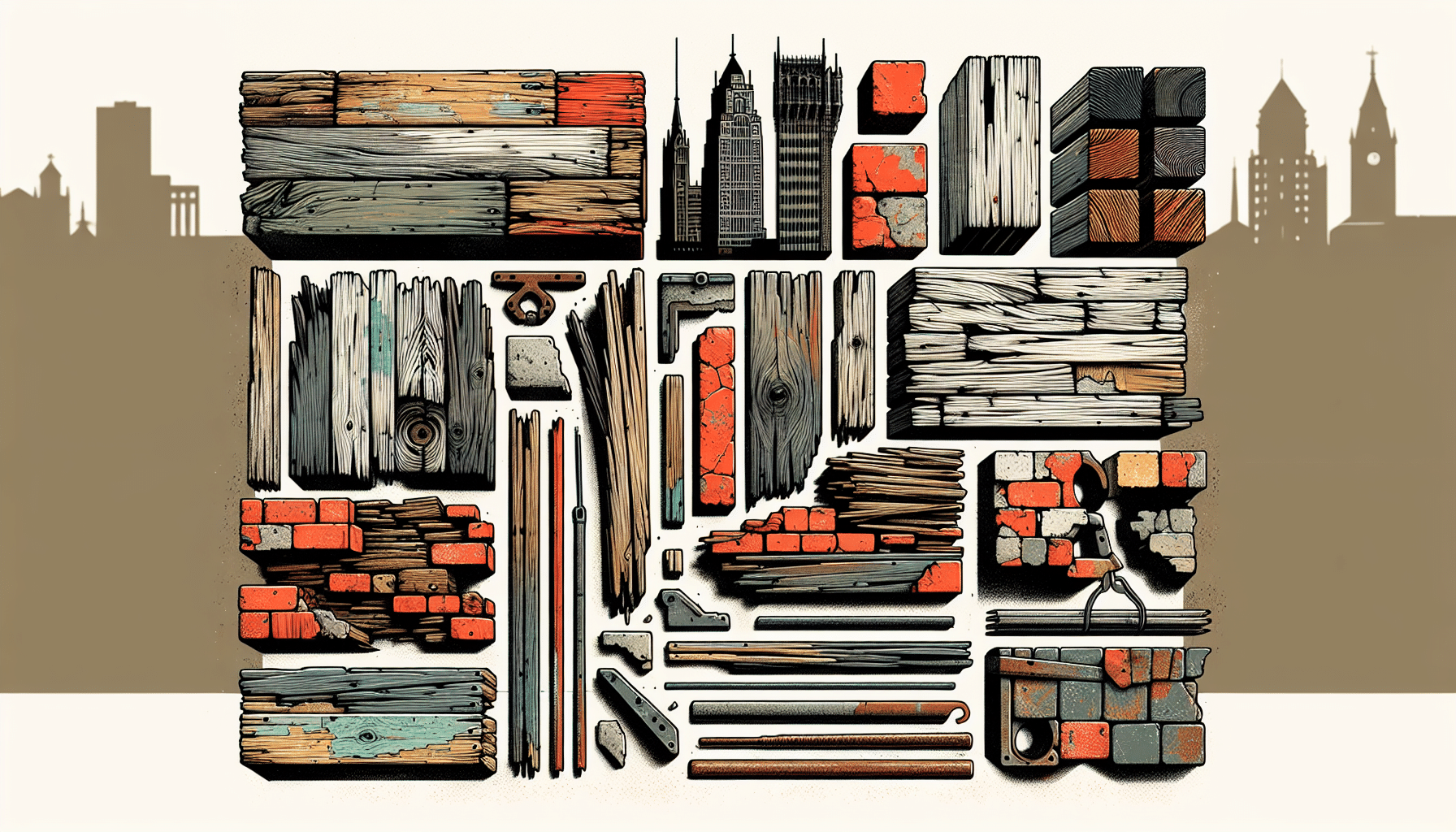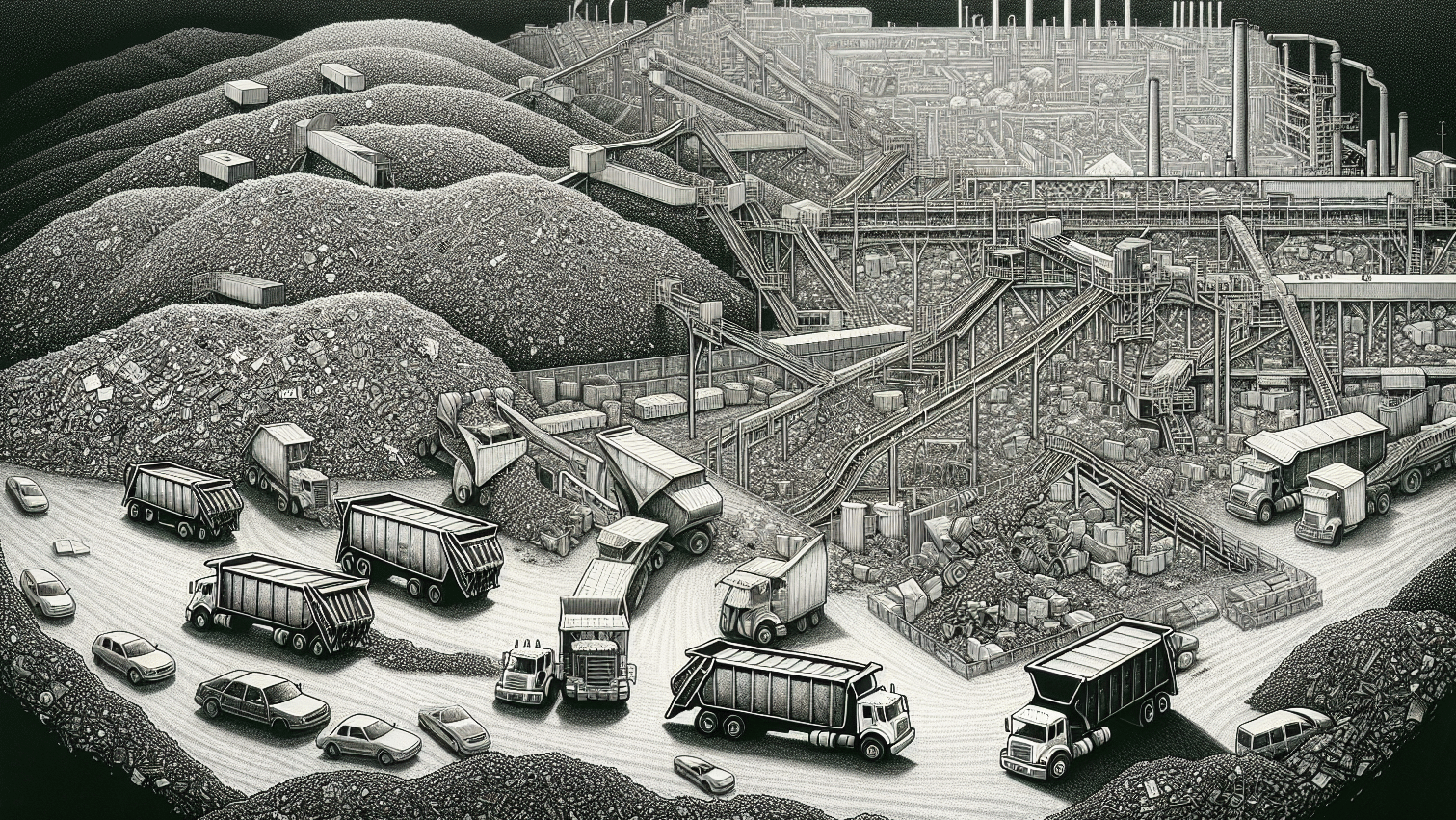Deconstructing a house involves carefully dismantling a building to salvage materials for reuse. This approach helps reduce waste and can save valuable items like wood and lighting fixtures. In this guide, you’ll learn about the deconstruction process, its benefits, and how to get started.
Key Takeaways
- Deconstruction is a methodical process that involves dismantling a house carefully to preserve and reuse materials.
- The practice of deconstructing houses can significantly reduce environmental impact by diverting up to 90% of construction waste from landfills.
- Effective house deconstruction requires comprehensive planning including obtaining necessary permits, arranging for appraisals, hiring skilled deconstruction contractors, and ensuring safety measures are in place.
What is Deconstruction?
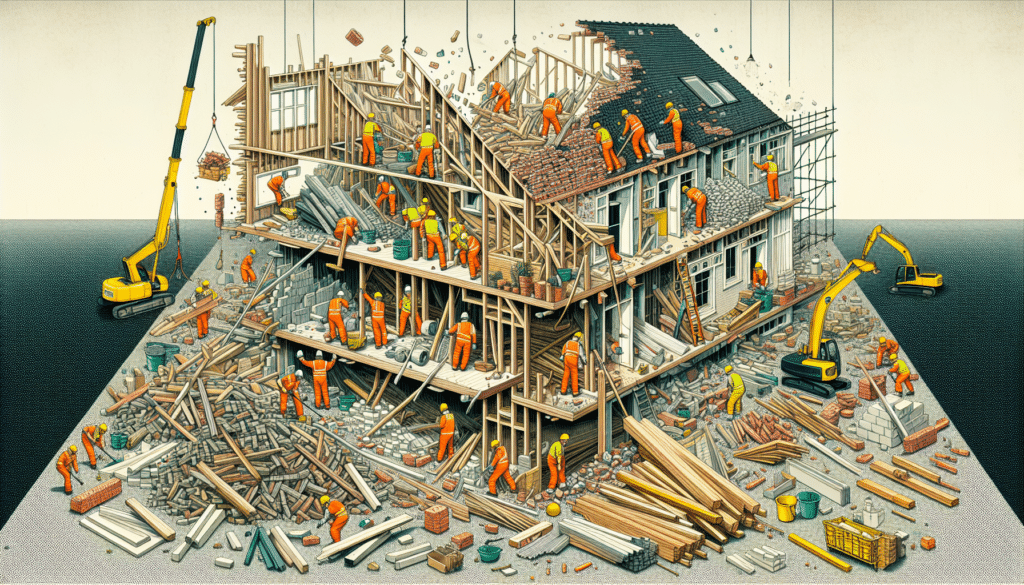
Deconstruction is a thoughtful disassembly of a building, intentionally preserving its components for future use. Unlike pure demolition, the deconstruction process involves carefully removing what is valuable and minimizing waste. While the process may require more time and consideration compared to the traditional path of demolition—taking up to two weeks for a complete house deconstruction—its benefits are instrumental to sustainability. Deconstruction contractors navigate through the layers of construction, carefully extracting and setting aside materials that traditional demolition would relegate to the landfill.
Benefits of Deconstructing a House
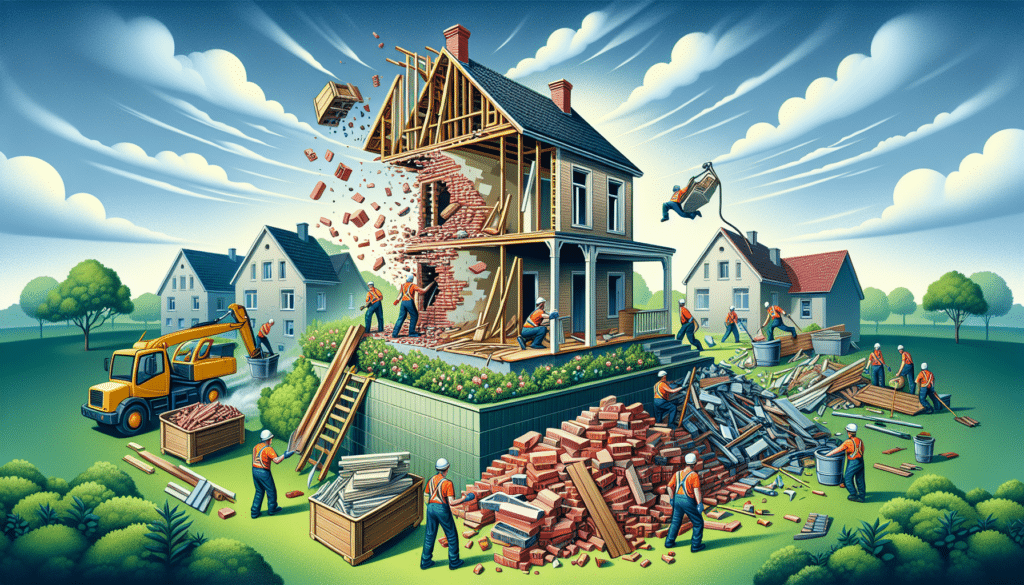
The benefits of house deconstruction ripple outwards, from the immediate environment to the broader community. Deconstruction has the potential to divert up to 90% of construction waste from landfills and significantly reduce the environmental footprint of dismantling a house. This approach offers numerous benefits and is a more sustainable option compared to traditional demolition methods.
Beyond the environmental impact, deconstruction can also have financial benefits. Donated materials may afford substantial tax deductions, potentially offsetting deconstruction costs or even covering them entirely. For property owners, this can be a compelling incentive. Moreover, homes built before WWII often hide treasures like virgin timber—materials that are not only of higher quality but also hold greater historical and aesthetic appeal.
Planning Your House Deconstruction

Embarking on the journey of house deconstruction requires careful planning as you’ll need to navigate the ins and outs of permits, appraisals, and finding the right deconstruction contractor. This groundwork is paramount to ensure that the deconstruction work proceeds without any complications.
Obtaining Necessary Permits
Navigating local regulations requires a keen eye for detail, starting with the necessary permits. These permits not only give you the green light to begin deconstruction but also set the parameters for what must be salvaged, adding an additional layer of intention to the process. Contacting local authorities, understanding the specifics of obtaining a demolition permit, and preparing to meet those requirements is your first foray into transforming your old house into a wellspring of new materials.
Arranging for an Appraisal
A proper appraisal can lead to potential tax benefits. When you arrange for an appraisal, you bring in an expert to assign fair market value to the materials you’re salvaging, which can significantly impact the deconstruction costs. This task requires IRS-approved inspectors to ensure proper documentation and adherence to tax laws. Once appraised, the materials’ value is a figure that you, as the property owner, can claim on your tax return.
Hiring a Deconstruction Contractor
The expertise of a deconstruction contractor is indispensable in the entire deconstruction process. A deconstruction contractor is responsible for orchestrating the removal and preservation of building materials, ensuring that each piece is carefully extracted and cataloged, and providing guidance throughout the deconstruction process. From the weighty beams to the delicate wiring, each element is considered and conserved by the deconstruction contractor, paving the way for its reincarnation in new construction projects.
Preparing the Site for Deconstruction

Preparing the site for deconstruction is a crucial prelude to the actual work. This phase includes utility shutdowns, temporary fencing, and rigorous safety measures, all designed to create a controlled and safe environment.
Shutting Off Utilities
The first safety tip for any deconstruction project is to shut off utilities. This action is non-negotiable as it prevents accidents and ensures that the deconstruction work can proceed without fear of gas leaks or electrical shorts. It is important to make sure that all fixtures such as sinks and washers are disconnected and safely uninstalled. This preparation not only safeguards the work crew but also ensures that neighbors’ services are uninterrupted, fostering goodwill and cooperation throughout the deconstruction.
Setting Up Temporary Fencing
After safely shutting off all utilities, the next step is to secure the perimeter. Temporary fencing is an essential measure that safeguards passersby and neighboring properties from the mess resulting from deconstruction. Erecting barriers and clear signage demonstrates a commitment to safety and respect for the community.
Ensuring Safety Measures
Safety is the backbone of any deconstruction project. From conversations with neighbors about the impending work to vigilant site inspections, every step is taken with the well-being of workers and residents in mind. It is important to create a safe environment where the deconstruction can proceed without fear of injury or mishap. Equipping workers with the right gear—goggles, masks, hard hats, and gloves—is just the start. Ensuring proper harnessing and fall protection on the roof, stable ladder placement, and the immediate removal of hazards are all important for maintaining on-site safety.
Identifying Salvageable Materials
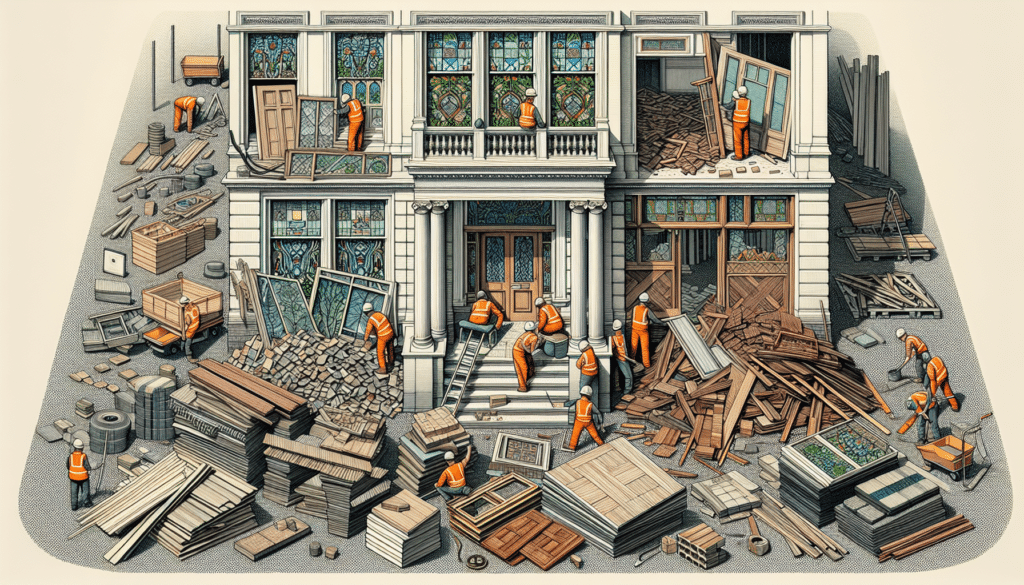
Identifying salvageable materials is a crucial step in deconstruction, determining what can be given a second life and what will be recycled. From the gleaming hardwood floors to the sturdy beams and frames, each item is assessed for its potential to be reused, donated, or transformed into recycled materials.
Windows and Doors
Windows, and doors are often prime candidates for salvage. Their frames, if intact and structurally sound, can be repurposed in new construction, retaining the charm and character of the old house. High-quality materials, such as solid wood or vintage glass, add value and appeal, making them sought-after items for homeowners and builders alike. Inspecting each window and door, the deconstruction team makes careful decisions about which pieces are worth salvaging. The goal is to save items that will stand the test of time and find new homes in the walls of another structure.
Flooring Material
Flooring materials, particularly hardwood and specialty tiles, can be reclaimed and refinished, giving them a fresh start in a new house. The process of salvaging flooring is meticulous but rewarding, as each plank or tile is freed from its adhesive bonds and prepared for reuse. Even carpeting and linoleum, if in good condition, can be repurposed, underscoring the comprehensive nature of the deconstruction process.
Roofing Materials
Durable roof materials like slate and metal are particularly valuable, enduring the elements with grace and providing a protective cloak for new structures. Roofing is often a labor-intensive aspect of deconstruction, but the payoff is significant. The beauty of roofing materials lies not only in their functionality but also in their aesthetic. Slate tiles, with their unique texture and color, can be a highlight in a new project, while metal’s longevity ensures it can benefit many projects for years to come.
The Deconstruction Process
With the pieces in place and the materials earmarked for salvation, the real work of home deconstruction begins. This phase is where plans are put into action, and the house is gradually, and with great care, taken apart. From the interior rooms to the external facade, each step is taken with an eye toward preservation and safety.
Interior Deconstruction
Interior deconstruction focuses on the removal of fixtures and finishes that have adorned the home. Cabinetry, appliances, and floor coverings are delicately removed with patience and precision. Whether it’s the careful extraction of a vintage bathtub or the unscrewing of kitchen countertops, interior deconstruction is a hands-on process. It’s a testament to the value seen in every component, with even small items like doorknobs and light fixtures finding their way into the inventory of reusable materials.
Exterior Deconstruction
The exterior deconstruction is when the outdoor elements of the house are carefully dismantled and assessed for reuse. Roofing materials, siding, and structural elements are removed with attention to maintaining the integrity of each piece. This step often requires heavy machinery and a skilled hand in order to maintain the original structure of the pieces. Load-bearing walls and other critical supports are the last to be dismantled, ensuring the house’s framework remains stable until the very end.
Donating and Reusing Salvaged Materials
Donating and reusing these deconstructed materials can have a profound impact on the environment and the community. Organizations like Habitat for Humanity are examples of some of the groups that welcome these materials for their projects. Every salvaged door, every beam, and every appliance becomes part of a greater cycle of sustainability when donated or reused.
Cost Considerations
While deconstruction may have higher upfront costs compared to demolition, the financial landscape is potentially advantageous for the property owner. Tax deductions from donated materials and the potential for selling salvaged items can significantly offset initial expenses of deconstruction. It’s a long-term investment in sustainability that can also be kind to your pocketbook.
Summary
As we wrap up our journey through the world of deconstruction, we come away with an appreciation for the meticulous process. Deconstruction is an ode to sustainability, an investment in community, and an overall beneficial financial decision. It challenges us to recognize the potential in every nail, board, and tile. May this guide inspire you to consider deconstruction, not just as a means of taking down, but as a way of giving back.
Frequently Asked Questions
What makes deconstruction different from traditional demolition?
Deconstruction differs from traditional demolition by salvaging materials for reuse, while traditional demolition leads to more waste sent to landfills.
Are there financial benefits to deconstructing a house?
Deconstructing a house can offer substantial tax deductions for the value of donated materials, potentially offsetting deconstruction costs.
What kind of permits do I need for house deconstruction?
You’ll need demolition and deconstruction permits to comply with local regulations and salvage materials effectively.
How long does the deconstruction process take?
The deconstruction process can take up to two weeks, depending on the size of the house. This longer time frame allows for more materials to be salvaged compared to traditional demolition.
Can I donate salvaged materials from deconstruction?
Yes, you can donate salvaged materials from deconstruction to organizations like Habitat for Humanity, who can reuse them in new construction projects or sell them to support charitable causes.















